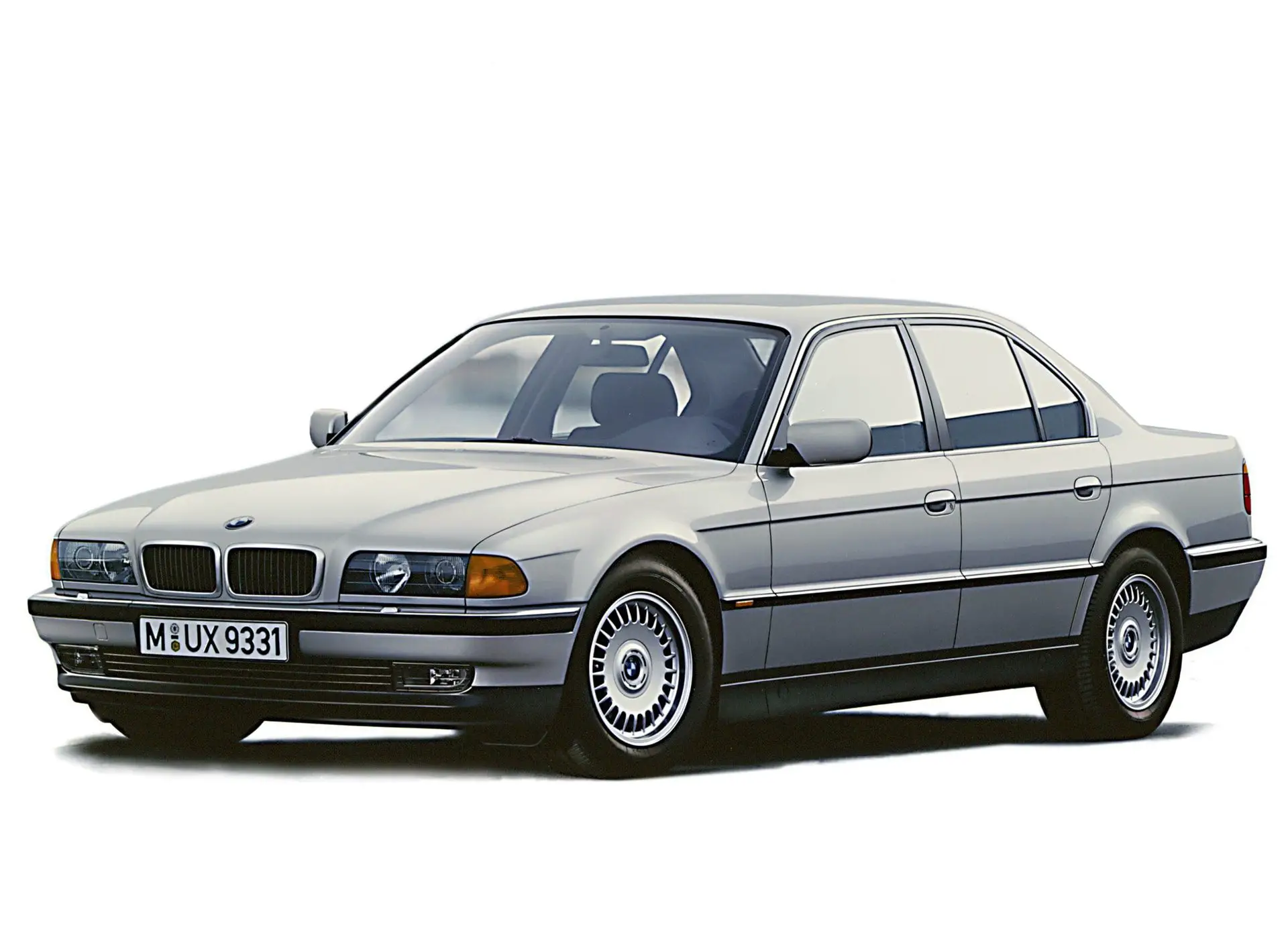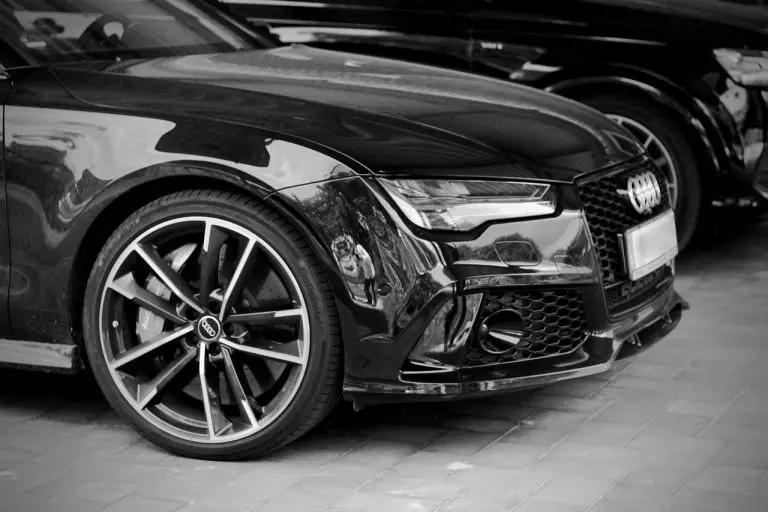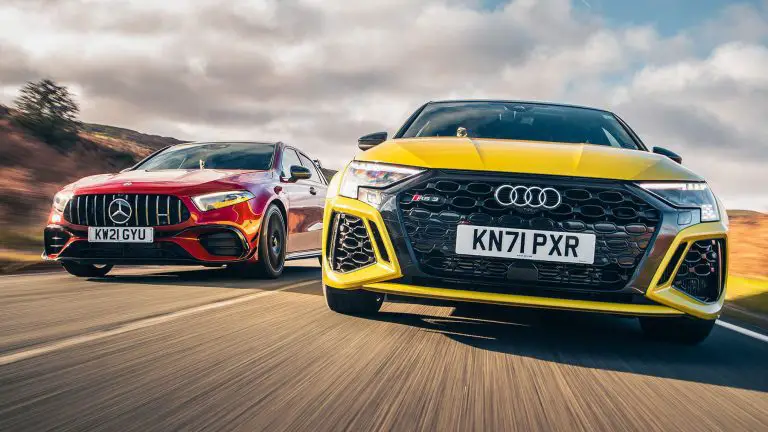BMW 7 Series Best and Worst Years (Top Picks!)
From its debut in 1977, the BMW 7 Series has been the German company’s most opulent sedan. From the 7 Series E23, the vehicle has advanced significantly in technology with each new iteration.
Over the years, various engines, including inline-4s, straight-6s, V8s, and V12s, both normally aspirated and turbocharged, have been used to power the 7 Series. Over the years, the model also received numerous additional safety features and entertainment and driver assistance innovations that were the first globally.
The appearance has changed from sticking to the standard BMW design language, as it did with the E38, to contentious features that the E65 tested the market with.
Despite being more fun and sportier to drive, BMW has consistently kept up with the Mercedes S-Class, the market leader in the luxury executive sedan sector.
With the introduction of the G70 7 Series and i7, the 7 Series has entered its seventh generation and marks the first time the model will be entirely electrified. Therefore, before the i7 steals the show, every model of the BMW 7 Series is ranked.

VIDEO: Which Is The Best BMW 7 Series? Old Vs. New
BMW 7 Series Best and Worst Years
Depending on the source, there are different best and worst years for the BMW 7 Series. Every BMW 7 Series generation was graded by HotCars.com from worst to best, with the fourth generation (E65) being rated as the worst. The finest year for the BMW 7 series, according to CarShtuff.com, is 2017 because of its exceptional performance and ideal balance of comfort, luxury, security, and technology. Each generation of the BMW 7 Series is ranked by BMWBlog.com, with the E65 model at number seven overall. Some of the greatest BMW 7 Series models ever, according to Ranker.com, are the 1993, 2012, and 2007 models. Furthermore, although many aficionados view the third generation car (1995-2001) as a high point in the 7 Series evolution, they do not necessarily believe it to be the best BMW 7 series, according to MotorTrend.com.
From Worst to Best: Every generation of the BMW 7 Series
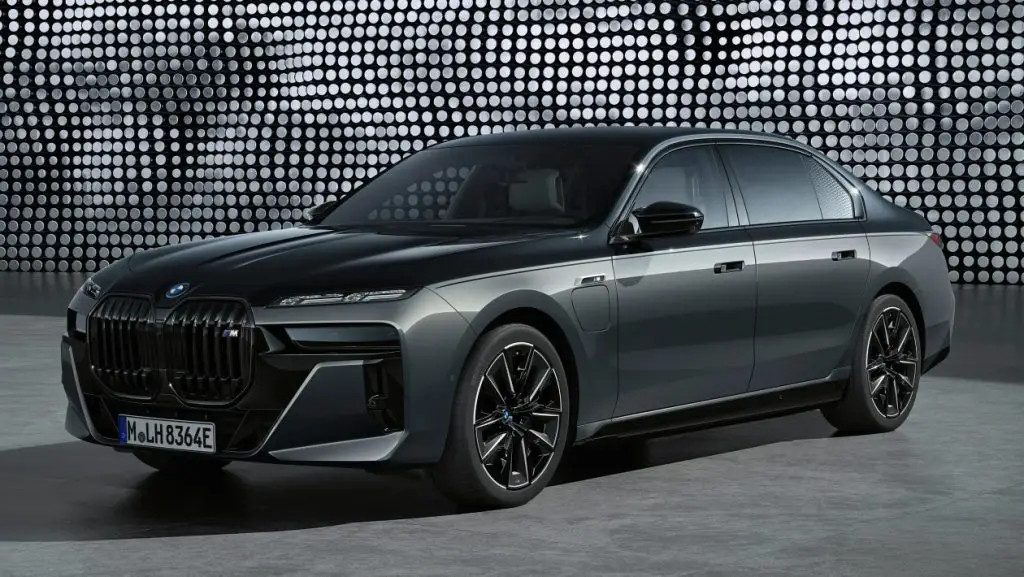
Generation IV (E65)
By far the poorest iteration of the 7 Series, the E65 was a letdown. The pre-facelifted model had a terrible design that purchasers found too divisive. BMW’s LCI (Life Cycle Impulse) revamp addressed most of its issues, although the E65 had already been compromised.
However, the E65 did, like with every new 7, add new features, the most significant of which was the iDrive system.
The inside differed from the standard for a BMW, just like the appearance did. For example, the steering-wheel-mounted gear selector was relocated from the center console, and the parking brake was converted to a button and relocated to the dashboard to make room for a cup holder.
Moreover, the E65 did away with the standard BMW driver-angled central cluster. Instead, this vehicle was offered a variety of i6s, V8s, and a world-first direct-injected V12 engine, just like earlier models. Not all awful, then.
Initial Generation (E23)
The first in a long line of executive BMW sedans was the BMW E23 7 Series. The BMW ‘New Six’ E3 sedans from the early 1970s were replaced with the 1977 introduction of the E23.
For BMW, the E23 introduced several firsts, including an onboard computer, a service interval indicator, a “check control panel,” and a sophisticated climate control system.
Moreover, the E23 had various driving aids, including front airbags and anti-lock brakes. The inline-6 gasoline engines that powered the E23 lineup ranged in size from 2.5 liters in the 725 to 3.5 liters in the 745i. The 745i was only available in South Africa and featured a normally aspirated 3.5-liter M88 engine, a derivative of the M1 supercar’s engine.
In addition, the European versions of the 745i had a turbocharged 3.4-liter engine that produced 250 horsepower and 280 lb-ft of torque.
Generation Two (E32)
The E32 generation 7 Series represented technological and engineering advancements. The E32 was released in 1986 and featured traction control, active suspension, and dual-zone climate control, and it was the first vehicle to be offered in two wheelbase.
The model also included firsts for a production automobile, such as Xenon lighting, double-glazed windows, and projector-lens headlamps.
First offered with an inline-6 and a V12 engine, the E32 7 Series eventually received a V8 engine. Moreover, the first occurrence of BMW’s renowned L-shaped taillights, a design feature that would appear in other models over the years, was seen in this model.
The E32 was also among the first vehicles that Alpina, a tuning business, redesigned to make it faster and more comfortable.
Third Generation (F01)
With the F01 7 Series, BMW chose to play it safe by just creating an extension of the E65 LCI’s design. The F01 was also the first BMW model not to have an ‘E’ internal code.
As the first BMW with a hybrid drivetrain, an 8-speed automatic transmission, a turbocharged V12, and all-wheel drive in the form of xDrive, the F01 set the bar high for other models.
Rear-wheel steering, radar cruise control, and texting rear seats were all options for the F01. To make parking easier, the car has cameras all over. Inline-6 engines were the conventional base engine for the 730i, 4.4-liter twin-turbo V8 engines for the 750i, and finally a 6.0-liter twin-turbo V12 engines for the 760i.
Originally equipped with the V8, the ActiveHybrid7 was later upgraded to the i6 in favor of efficiency.
Fourth Generation (E38)
One of the best full-size luxury vehicles ever produced is the BMW E38 7 Series. It was designed to fit the era’s design aesthetic, and the model was finished and given the green light 36 months before production was supposed to get underway.
As a result, many new technological advancements were made available in the E38 7 Series, including automatic leveling headlamps, side tubular airbags, electronic damper control, power moonroof, rain-sensing wipers, and electronic seat and steering wheel adjustment.
A variety of inline-6 engines and a V8 and the standard V12, were offered for the E38. The E38 was also the last 7 Series to have a manual transmission and the first to have a diesel engine. Unfortunately, it’s been a while since I’ve been able to get a hold of a copy of the book, but I’ve been meaning to.
The E38 had a specialized control system called the I-bus, an early version of BMW’s iDrive, and a multi-function steering wheel that could operate the music, radio, television, and other communication systems. The BMW E38 7 Series is regarded as one of the best BMW models ever made because of its design, driving characteristics, and agility.
Third Generation (G11)
There was yet another internal code update for the G11 7 Series. After being announced in 2015, the G11 has been manufactured ever since. The 7 Series’ passenger cabin is made of aluminum, tensile steel, and CFRP (Carbon-Fiber Reinforced Polymer) for the first time.
This increases structural rigidity while reducing the car’s total weight. The vehicle also includes the following:
- Automatic damper adjusters.
- An active anti-roll system.
- Self-leveling air suspension.
- Four-wheel steering on xDrive variants.
The base model 730i and lower end of the plug-in hybrid 740e are 4-cylinder engines for the first time in a 7 Series vehicle thanks to the G11.
As a result, three engines are available: a powerful 6.6-liter twin-turbo V12, a 3.0-liter turbocharged i6, and a 4.4-liter twin-turbo V8. The M760Li, the highest-spec G11 7 Series, will be dubbed “The Last V12” for 2022, marking the conclusion of the BMW V12 engine.
VII Generation (G70)
The BMW G70 7 Series and i7 have recently been presented and have generated a lot of controversies, with some admiring and others detesting the exterior appearance. In any case, the new G70 will be a tech-fest of entertainment and driver assistance features.
The addition of an electric model, Cashmere seats, and the considerable Theater Screen for the back passengers are among the show’s highlights.
A 4.4-liter twin-turbo V8 and two 3.0-liter i6 engines are available in the U.S. The ‘e’ suffixed versions of the internal combustion 7 Series are true hybrids, while all versions will have mild hybrid systems. The M760e, which features a 3.0-liter inline-6 and several electric motors that create 571 hp, will be the top-of-the-line model (for the time being).
Although the i7 xDrive60’s two motors will offer a total output of 544 horsepower, BMW has stated that the i7 M70 high-performance model will have 660 horsepower. Regarding flagship models, the new G70 7 Series and i7 are the greatest.
How Safe Is BMW 7 Series?

Depending on the source, the BMW 7 Series’ level of safety varies. The 2017 BMW 7 Series achieved a five-star overall safety rating from the NHTSA based on the sum of its driver and passenger star ratings.
According to Autoblog.com, the 2022 BMW 750’s IIHS and NHTSA crash test ratings demonstrate how well occupants are safeguarded in front, rear, and side impact incidents. In addition, the BMW 7 Series receives a 4.5 out of 5 rating for dependability and safety from AutoExpress.co.uk.
The BMW 7 Series [2019-2023] does not have any relevant safety rating information, according to CarTrade.com. Last but not least, NHTSA or IIHS test results for the BMW 7 Series have yet to be made available, according to Carbuzz.com.
Reliability of BMW 7 Series
Depending on the source, the BMW 7 Series dependability varies. Consumer Reports predicts that the reliability of the 2023 7 Series will be about average compared to other new vehicles based on the brand history of BMW and the previous version of the 7 Series.
The BMW 750Li has a Reliability Rating of 2.0 out of 5.0, placing it 26th out of 30 luxury full-size automobiles with an average annual repair cost of $1,027 according to RepairPal.com. Based on J.D. Power’s expected reliability score, U.S. News reports that the 2022 BMW 7 Series has a predicted dependability score of 85 out of 100.
In-depth, independent information on the BMW 7 Series is available from Consumer Reports, including details on significant redesigns, pricing, performance, and local inventory searches.
Eventually, the BMW 7 Series received a Great rating from J.D. Power with a score of 83/100 in terms of quality & reliability.
How To Find The Best Deals on BMW 7 Series?
Check out CarsDirect, Edmunds, U.S. News, RealCarTips.com, and Swapalease.com for the most incredible BMW 7 Series bargains. The 2023 BMW 7-Series is available for purchase and lease through CarsDirect, with a range of trim levels available. Edmunds gives the finest BMW 7 Series leasing specials using current special offers, deals, and more.
Via their Best Price Program, U.S. News assists you in finding the most excellent regional deals on the BMW 7-Series with guaranteed savings. Finally, Swapalease.com provides sponsored advertisements for lease offers on the BMW 7-Series, including monthly payments and cash incentives.
Tips for Maintaining your BMW 7 Series
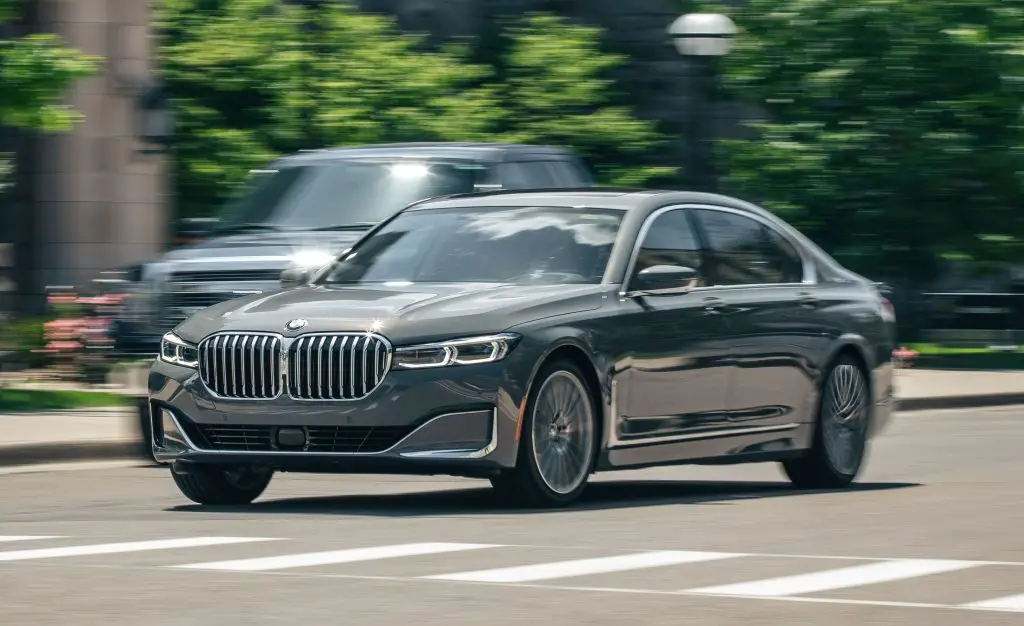
You can use the following advice to maintain your BMW 7 Series:
1. Adhere to the maintenance schedule for the BMW 7 Series that BMW suggests. Your car needs routine maintenance to stay in good working order.
2. Maintain regular fluid checks and oil changes. By doing this, you can guarantee that your engine and other parts are adequately oiled.
3. Regularly check tire pressure and change tires as necessary. This makes sure that your tires wear evenly and increases their lifespan.
4. Change brake pads, spark plugs, air filters, and other components as necessary. Specific components must be changed for continued peak performance as they deteriorate over time.
5. Maintain your vehicle spotless both inside and out. Frequent cleaning helps stop the accumulation of dirt, which can result in scratches and other damage.
Using these suggestions, keep your BMW 7 Series in top condition for many years while preventing unintended problems and expensive repairs.
You can reduce the maintenance expense for a pre-owned or new BMW 7 series by reading guides like those offered by Luxuryautoworks.com or Ottosbmw.com.
How Can You Tell Whether Something Is a Lemon?
Purchase a vehicle history report.
There is no better initial step when purchasing a used car than to obtain a car history report. Two well-known services offer this information for little money: Anyone looking to purchase a used car will find the information provided by CarFax and AutoCheck extremely helpful.
The reports let you know the number of past owners, whether or not it had any accidents, how frequently it required maintenance, and the current title. The final section is among the most crucial since it contains the lemon label, which attests that the car followed the correct legal procedures to be designated as a lemon.
However, in some areas, dealers must inform a customer if the vehicle is a manufacturer buyback, which is a reliable way to determine whether a vehicle has a lemon title.
However, it is the responsibility of the buyer to conduct a thorough investigation into the vehicle’s history. Therefore, consumers may need help if they accidentally purchase a secondhand lemon because they must inspect it first.
Owner Background
You can view the owner’s history on the vehicle history report, which should indicate whether the manufacturer has purchased the vehicle back.
While owners can claim a car is a lemon in a legal dispute and ask the automaker to buy back the problematic vehicle, that is a guaranteed technique to determine if the car was labeled a lemon.
You can also determine if the vehicle was sold or traded before it was given a lemon tag if the prior owner may have missed an issue. It also implies that the car’s persistent issue must be apparent.
Repair Record
Look carefully at the vehicle’s repair record and try to identify any recurring issues. Recurring problems in cars with lemon histories are simple to spot.
You can determine whether the issues with the car are minor wear and tear concerns, such as those with the clutch or brakes, or a more severe problem.
Check to discover if the repairs were necessary or carried out even when the car was brand new. It can assist in determining whether the car is a lemon or if an incident like a collision or modification caused a misdiagnosed issue.
Are the repairs significant or minor? A severe repair would deal with the drivetrain or suspension, whereas a superficial one would address non-driving-related issues like window or seat controls.
Severe repairs would be more challenging, but handling a car might not be a hassle if a car was considered a lemon for a less severe cause.
The report also shows whether repairs are being made at a dealership or a general shop. Like you would with any used car, examine the vehicle’s general condition and health and determine whether routine maintenance has also been carried out.
This will assist you in deciding whether or not you should consider purchasing this car.
Inspection before purchase
Is the car still a good investment? You should get a pre-purchase inspection if the flaws are not too concerning or if you believe the automobile may have been incorrectly labeled as a lemon.
A mechanic can determine whether the problems are repairable and why the car was considered a lemon.
A technician can assist you in determining whether or not a recurring issue is indicative of more severe problems or worries about the quality of the vehicle.
Their satisfaction with the car might help determine if it is a worthwhile investment or a lost cause.
BMW 7 Series FAQ’s
Are vintage BMW 7 Series trustworthy?
The 7 Series has so far had few reported issues, and the preceding generation had a mostly reliable track record. The car’s smaller sister, the 5 Series, however, did appear in our most recent What Car? Reliability Survey.
Do BMW 7 Series issues exist?
This is one of the most frequently reported 7 Series problems and is typically nothing more than an oil filter gasket leak. Your engine won’t receive the lubrication it requires if you don’t replace the gasket with a new one from BreakerYard, and it will eventually seize.
How reliable is the BMW 7 Series?
For the soul and sensation we all yearn for, as well as their dynamics, BMWs have long relied on their generally excellent engines, but the emphasis is increasingly shifting elsewhere. The inside of the new 7 Series is perhaps the best in the automotive industry, having been expertly designed, built, and implemented.
Which 7 Series has the most power?
BMW’s all-electric i7, the most potent model of the new 7 Series premium vehicle, will have 600 horsepower.
Which BMW is the most durable?
BMW M6
The BMW M6 is among the top 10 sports cars with the longest lifespans, according to iSeeCars, some of which have over 200,000 kilometers on them.
John Valdez - Passionate Car Enthusiast and Accomplished Writer
Meet John Valdez, a dedicated car lover and seasoned writer whose passion for automobiles is as vibrant as his words are eloquent. With a keen eye for detail and a heart that beats to the rhythm of engines, John brings a unique blend of expertise and enthusiasm to the world of automotive journalism.

